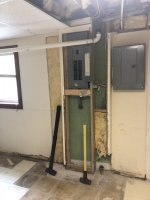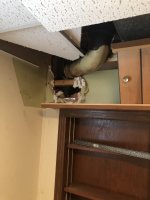Hello everyone,
As this is my first post I just want to say that I have really appreciate everything I have learned cruising through the various forums on this site and I look forward to being a part of the community here. I write today because I need your help.
My wife and I just purchased a new to us home that was made in the 1950s. After living in it for a while we quickly learned that we were having a lot of plumbing issues. Unfortunately, upon further inspection, we have discovered that almost all of the galvanized and cast-iron pipe that was used throughout the house is almost rotten through to. We have made the decision to update everything with PVC out to where our pipe enters into our septic.
Much of our pipe is buried underneath of our concrete slab in our basement. While I would love to pay someone to do this, I simply can't afford to right now. My knowledge of plumbing is limited but I'm a quick learner and am not foreign to DIY projects. I would like some help formulating a plan of attack here.
What is the best way to open up a large amount of concrete floor (60-70 square feet)? I live close to tool rental companies and have looked into jackhammers and concrete grinders. Would one of these be better than the other?
Thanks for sharing your wisdom,
Andrew
As this is my first post I just want to say that I have really appreciate everything I have learned cruising through the various forums on this site and I look forward to being a part of the community here. I write today because I need your help.
My wife and I just purchased a new to us home that was made in the 1950s. After living in it for a while we quickly learned that we were having a lot of plumbing issues. Unfortunately, upon further inspection, we have discovered that almost all of the galvanized and cast-iron pipe that was used throughout the house is almost rotten through to. We have made the decision to update everything with PVC out to where our pipe enters into our septic.
Much of our pipe is buried underneath of our concrete slab in our basement. While I would love to pay someone to do this, I simply can't afford to right now. My knowledge of plumbing is limited but I'm a quick learner and am not foreign to DIY projects. I would like some help formulating a plan of attack here.
What is the best way to open up a large amount of concrete floor (60-70 square feet)? I live close to tool rental companies and have looked into jackhammers and concrete grinders. Would one of these be better than the other?
Thanks for sharing your wisdom,
Andrew




